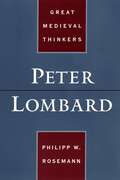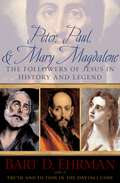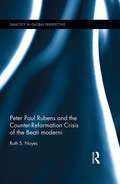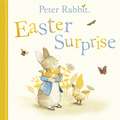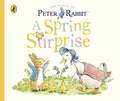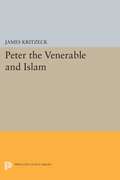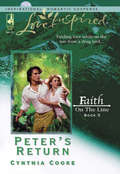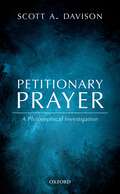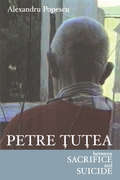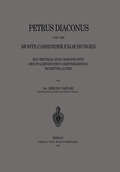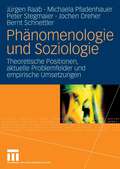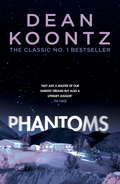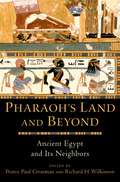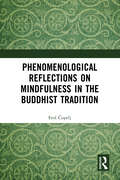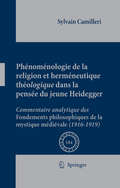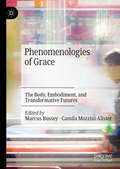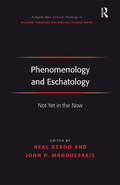- Table View
- List View
Peter Lombard: Volume 3 (Great Medieval Thinkers)
by Philipp W. RosemannPeter Lombard is best known as the author of a celebrated work entitled Book of Sentences, which for several centuries served as the standard theological textbook in the Christian West. It was the subject of more commentaries than any other work of Christian literature besides the Bible itself. The Book of Sentences is essentially a compilation of older sources, from the Scriptures and Augustine down to several of the Lombard's contemporaries, such as Hugh of Saint Victor and Peter Abelard. Its importance lies in the Lombard's organization of the theological material, his method of presentation, and the way in which he shaped doctrine in several major areas. Despite his importance, however, there is no accessible introduction to Peter Lombard's life and thought available in any modern language. This volume fills this considerable gap. Philipp W. Rosemann begins by demonstrating how the Book of Sentences grew out of a long tradition of Christian reflection-a tradition, ultimately rooted in Scripture, which by the twelfth century had become ready to transform itself into a theological system. Turning to the Sentences, Rosemann then offers a brief exposition of the Lombard's life and work. He proceeds to a book-by-book examination and interpretation of its main topics, including the nature and attributes of God, the Trinity, creation, angelology, human nature and the Fall, original sin, Christology, ethics, and the sacraments. He concludes by exploring how the Sentences helped shape the further development of the Christian tradition, from the twelfth century through the time of Martin Luther.
Peter, Paul and Mary Magdalene: The Followers of Jesus in History and Legend
by Bart D EhrmanBart Ehrman, author of the highly popular books Truth and Fiction in The Da Vinci Code, Lost Christianities, and the New York Times bestseller Misquoting Jesus, here takes readers on another engaging tour of the early Christian church, illuminating the lives of Jesus' most intriguing followers: Simon Peter, the Apostle Paul, and Mary Magdalene. What does the Bible tell us about each of these key followers of Christ? What legends have sprung up about them in the centuries after their deaths? Was Paul bow-legged and bald? Was Peter crucified upside down? Was Mary Magdalene a prostitute? In this lively work, Ehrman separates fact from fiction, presenting complicated historical issues in a clear and informative way and relating vivid anecdotes culled from the traditions of these three followers. He notes, for instance, that there is no evidence to suggest that Mary Magdalene was a prostitute (this legend can be traced to a sermon preached by Gregory the Great five centuries after her death), and little reason to think that she was married to Jesus. Similarly, there is no historical evidence for the well-known tale that Peter was crucified upside down. A serious book but vibrantly written and leavened with many colorful stories, Peter, Paul, and Mary Magdalene will appeal to anyone curious about the early Christian church and the lives of these important figures. "An informed but breezy look at the myths surrounding Jesus' most influential followers.... This book contains valuable historical scholarship. It also encourages readers to approach the Scriptures with fresh and enlightened eyes." --Christian Science Monitor
Peter, Paul and Mary Magdalene: The Followers of Jesus in History and Legend
by Bart D EhrmanBart Ehrman, author of the highly popular books Truth and Fiction in The Da Vinci Code, Lost Christianities, and the New York Times bestseller Misquoting Jesus, here takes readers on another engaging tour of the early Christian church, illuminating the lives of Jesus' most intriguing followers: Simon Peter, the Apostle Paul, and Mary Magdalene. What does the Bible tell us about each of these key followers of Christ? What legends have sprung up about them in the centuries after their deaths? Was Paul bow-legged and bald? Was Peter crucified upside down? Was Mary Magdalene a prostitute? In this lively work, Ehrman separates fact from fiction, presenting complicated historical issues in a clear and informative way and relating vivid anecdotes culled from the traditions of these three followers. He notes, for instance, that there is no evidence to suggest that Mary Magdalene was a prostitute (this legend can be traced to a sermon preached by Gregory the Great five centuries after her death), and little reason to think that she was married to Jesus. Similarly, there is no historical evidence for the well-known tale that Peter was crucified upside down. A serious book but vibrantly written and leavened with many colorful stories, Peter, Paul, and Mary Magdalene will appeal to anyone curious about the early Christian church and the lives of these important figures. "An informed but breezy look at the myths surrounding Jesus' most influential followers.... This book contains valuable historical scholarship. It also encourages readers to approach the Scriptures with fresh and enlightened eyes." --Christian Science Monitor
Peter Paul Rubens and the Counter-Reformation Crisis of the Beati moderni (Sanctity in Global Perspective)
by Ruth S. NoyesPeter Paul Rubens and the Crisis of the Beati Moderni takes up the question of the issues involved in the formation of recent saints - or Beati moderni (modern Blesseds) as they were called - by the Jesuits and Oratorians in the new environment of increased strictures and censorship that developed after the Council of Trent with respect to legal canonization procedures and cultic devotion to the saints. Ruth Noyes focuses particularly on how the new regulations pertained to the creation of emerging cults of those not yet canonized, the so-called Beati moderni, such as Jesuit founders Francis Xavier and Ignatius Loyola, and Filippo Neri, founder of the Oratorians. Centrally involved in the book is the question of the fate and meaning of the two altarpiece paintings commissioned by the Oratorians from Peter Paul Rubens. The Congregation rejected his first altarpiece because it too specifically identified Filippo Neri as a cult figure to be venerated (before his actual canonization) and thus was caught up in the politics of cult formation and the papacy’s desire to control such pre-canonization cults. The book demonstrates that Rubens' second altarpiece, although less overtly depicting Neri as a saint, was if anything more radical in the claims it made for him. Peter Paul Rubens and the Crisis of the Beati Moderni offers the first comparative study of Jesuit and Oratorian images of their respective would-be saints, and the controversy they ignited across Church hierarchies. It is also the first work to examine provocative Philippine imagery and demonstrate how its bold promotion specifically triggered the first wave of curial censure in 1602.
Peter Paul Rubens and the Counter-Reformation Crisis of the Beati moderni (Sanctity in Global Perspective)
by Ruth S. NoyesPeter Paul Rubens and the Crisis of the Beati Moderni takes up the question of the issues involved in the formation of recent saints - or Beati moderni (modern Blesseds) as they were called - by the Jesuits and Oratorians in the new environment of increased strictures and censorship that developed after the Council of Trent with respect to legal canonization procedures and cultic devotion to the saints. Ruth Noyes focuses particularly on how the new regulations pertained to the creation of emerging cults of those not yet canonized, the so-called Beati moderni, such as Jesuit founders Francis Xavier and Ignatius Loyola, and Filippo Neri, founder of the Oratorians. Centrally involved in the book is the question of the fate and meaning of the two altarpiece paintings commissioned by the Oratorians from Peter Paul Rubens. The Congregation rejected his first altarpiece because it too specifically identified Filippo Neri as a cult figure to be venerated (before his actual canonization) and thus was caught up in the politics of cult formation and the papacy’s desire to control such pre-canonization cults. The book demonstrates that Rubens' second altarpiece, although less overtly depicting Neri as a saint, was if anything more radical in the claims it made for him. Peter Paul Rubens and the Crisis of the Beati Moderni offers the first comparative study of Jesuit and Oratorian images of their respective would-be saints, and the controversy they ignited across Church hierarchies. It is also the first work to examine provocative Philippine imagery and demonstrate how its bold promotion specifically triggered the first wave of curial censure in 1602.
Peter Powers and the Sinister Snowman Showdown! (Peter Powers #5)
by Brandon T. Snider Kent ClarkIf you like the Avengers, Justice League, or The Incredibles, then you'll love this family of superheroes! This new chapter book series is perfect for reluctant readers.Join Peter Powers (the boy with not-to-super powers) and his friends for an exciting HOLIDAY-themed story of action, adventure, and... evil snowmen?! Everyone in Peter Powers's family has super awesome superpowers--except Peter. All he can do is make ice cubes and freeze stuff. But it's his favorite time of year, so who cares?! There's nothing like the holidays to put people in a good mood! But after Mr. Powers vanishes without a trace, other things in Boulder City start to disappear too. Now, it's up to Peter and his best friends, Chloe and Sandro, to search out who has a sinister heart of ice. Can the trio face the army of snowmen alone, or will the holidays be ruined for everyone?Peter Powers and the Sinister Snowman Showdown! is the fifth chapter book in a new series of exciting stories about a young boy who has some rather crummy superpowers. Each story is full of humor, action, and fun, but the charm can be found in the heartfelt message about the power of family, friends, and having confidence. (And look for a dastardly cameo by Santa's dark counterpart... Krampus!)©2017 by Hachette Book Group, Inc.
Peter Rabbit: Easter Surprise (PR Baby books)
by Beatrix PotterJoin Peter and his friends in this charming re-issue of Easter Surprise. Classic Beatrix Potter characters combined with a gorgeous new cover make this little story board book a must for every baby's Easter.
Peter Rabbit Tales - A Spring Surprise
by Beatrix PotterIt's springtime and all the animals are preparing to celebrate with a spring picnic! Everyone has to bring something to share with their friends, but there's just one small problem . . . Peter Rabbit can't think of ANYTHING to bring.Everyone else seems to have the perfect gift to share. Will Peter manage to find something in time? Will he stumble upon the best springtime surprise?A sweet story about sharing, springtime celebrations, and a gentle message about the importance of friends.This is the fifth title in a new series of stories for the very young set in Peter Rabbit's world. The simple tales mirror important early experiences and emotions of young children through the eyes of Beatrix Potter's most well-loved characters, while Eleanor Taylor's illustrations are filled with charm and humour.
Peter the Venerable and Islam
by James Aloysius KritzeckFor over four centuries the principal source of Christian European knowledge of Islam stemmed from a project sponsored by Peter the Venerable, ninth abbot of Cluny, in 1142. This consisted of Latin translations of five Arabic works, including the first translation of the Koran in a western language. Known as the Toledan Collection, it was eventually printed in 1543 with an introduction by Martin Luther. The abbot also completed a handbook of Islam beliefs and a major analytical and polemical work, Liber contra sectam Saracenorum; annotated editions of these texts are included in this book.Originally published in 1964.The Princeton Legacy Library uses the latest print-on-demand technology to again make available previously out-of-print books from the distinguished backlist of Princeton University Press. These editions preserve the original texts of these important books while presenting them in durable paperback and hardcover editions. The goal of the Princeton Legacy Library is to vastly increase access to the rich scholarly heritage found in the thousands of books published by Princeton University Press since its founding in 1905.
Petitionary Prayer: A Philosophical Investigation
by Scott A. DavisonThis volume explores the philosophical issues involved in the idea of petitionary prayer, where this is conceived as an activity designed to influence the action of the all-knowing, all-powerful, perfectly good God of traditional theism. Theists have always recognized various logical and moral limits to divine action in the world, but do these limits leave any space among God's reasons for petitionary prayer to make a difference? Petitionary Prayer: A Philosophical Investigation develops a new account of the conditions required for a petitionary prayer to be answered by employing the notion of contrastive explanation. With careful attention to recent developments in metaphysics, epistemology, and value theory, Scott A. Davison surveys the contemporary literature on this question. He considers questions about human freedom and responsibility in relation to different views of divine providence, along with the puzzles inherent in Christian teachings concerning petitionary prayer. Davison develops new challenges to the coherence of the idea of answered petitionary prayer based upon the nature of divine freedom, the limits of human knowledge, and the nature of those good things that require a recipient's permission before they can be given. He proposes new defences, building upon careful analysis of the shortcomings of previous proposals and clarifying the issues for future debate.
Petitionary Prayer: A Philosophical Investigation
by Scott A. DavisonThis volume explores the philosophical issues involved in the idea of petitionary prayer, where this is conceived as an activity designed to influence the action of the all-knowing, all-powerful, perfectly good God of traditional theism. Theists have always recognized various logical and moral limits to divine action in the world, but do these limits leave any space among God's reasons for petitionary prayer to make a difference? Petitionary Prayer: A Philosophical Investigation develops a new account of the conditions required for a petitionary prayer to be answered by employing the notion of contrastive explanation. With careful attention to recent developments in metaphysics, epistemology, and value theory, Scott A. Davison surveys the contemporary literature on this question. He considers questions about human freedom and responsibility in relation to different views of divine providence, along with the puzzles inherent in Christian teachings concerning petitionary prayer. Davison develops new challenges to the coherence of the idea of answered petitionary prayer based upon the nature of divine freedom, the limits of human knowledge, and the nature of those good things that require a recipient's permission before they can be given. He proposes new defences, building upon careful analysis of the shortcomings of previous proposals and clarifying the issues for future debate.
Petre Tutea: Between Sacrifice and Suicide
by Alexandru PopescuPetre Tutea (1902-91) was one of the outstanding Christian dissident intellectuals of the Communist era in Eastern Europe. Revered as a saint by some, he spent thirteen years as a prisoner of conscience and twenty-eight years under house arrest at the hands of the Securitate. This book explores his unique response to the horrors of torture and 're-education' and reveals the experience of a whole generation detained in the political prisons. Tutea’s understanding of human needs and how they can be fulfilled even amidst extreme adversity not only reflects huge learning and great brilliance of mind, but also offers a spiritual vision grounded in personal experience of the Romanian Gulag. Following the fall of the Ceausescus, he has begun to emerge as a significant contributor to ecumenical Christian discourse and to understanding of wider issues of truth and reconciliation in the contemporary world.  As Tutea's pupil and scribe for twelve years, as a psychiatrist, and as a theologian, Alexandru Popescu is uniquely placed to present the work of this twentieth-century Confessor of the faith. Drawing on bibliographical sources which include unpublished or censored manuscripts and personal conversations with Tutea and with other prisoners of conscience in Romania, Popescu presents extensive translations of Tutea, which make his thought accessible to the English-speaking reader for the first time.  Through his stature as a human being and his authority as a thinker, Petre Tutea challenges us to question many of our assumptions. The choice he presents between ’sacrifice’ and ’moral suicide’ focuses us on the very essence of religion and human personhood. Resisting any ultimate separation of theology and spirituality, his work affirms hope and love as the sole ground upon which truth can be based. At the same time, hope and love are not mere ideal emotions, but are known and lived in engagement with the real world - in politics, economics, science, ecol
Petre Tutea: Between Sacrifice and Suicide
by Alexandru PopescuPetre Tutea (1902-91) was one of the outstanding Christian dissident intellectuals of the Communist era in Eastern Europe. Revered as a saint by some, he spent thirteen years as a prisoner of conscience and twenty-eight years under house arrest at the hands of the Securitate. This book explores his unique response to the horrors of torture and 're-education' and reveals the experience of a whole generation detained in the political prisons. Tutea’s understanding of human needs and how they can be fulfilled even amidst extreme adversity not only reflects huge learning and great brilliance of mind, but also offers a spiritual vision grounded in personal experience of the Romanian Gulag. Following the fall of the Ceausescus, he has begun to emerge as a significant contributor to ecumenical Christian discourse and to understanding of wider issues of truth and reconciliation in the contemporary world.  As Tutea's pupil and scribe for twelve years, as a psychiatrist, and as a theologian, Alexandru Popescu is uniquely placed to present the work of this twentieth-century Confessor of the faith. Drawing on bibliographical sources which include unpublished or censored manuscripts and personal conversations with Tutea and with other prisoners of conscience in Romania, Popescu presents extensive translations of Tutea, which make his thought accessible to the English-speaking reader for the first time.  Through his stature as a human being and his authority as a thinker, Petre Tutea challenges us to question many of our assumptions. The choice he presents between ’sacrifice’ and ’moral suicide’ focuses us on the very essence of religion and human personhood. Resisting any ultimate separation of theology and spirituality, his work affirms hope and love as the sole ground upon which truth can be based. At the same time, hope and love are not mere ideal emotions, but are known and lived in engagement with the real world - in politics, economics, science, ecol
Petrus Diaconus und die Monte Cassineser Fälschungen: Ein Beitrag zur Geschichte des Italienischen Geisteslebens im Mittelalter
by Erich CasparPhänomenologie und Soziologie: Theoretische Positionen, aktuelle Problemfelder und empirische Umsetzungen
by Michaela Pfadenhauer Peter Stegmaier Jochen Dreher Bernt Schnettler Jürgen RaabDer Band erörtert die Bedeutung der Phänomenologie für die Soziologie. Die 35 Autorinnen und Autoren erkunden und diskutieren die Anregungen, Chancen und Erträge phänomenologischen Denkens für die Sozialtheorie ebenso wie für die empirische Sozialforschung. Hierzu werden in dem Band Beiträge zu soziologischen Begriffs- und Theorieproblemen, zu methodisch-methodologischen Aspekten und zu aktuellen Gegenwartsfragen versammelt. Diese vermitteln nicht nur einen umfassenden Überblick über den augenblicklichen Stand einer in der Soziologie in jüngster Zeit wieder verstärkt geführten Auseinandersetzung mit der Phänomenologie, sondern sie beziehen auch pointiert Stellung innerhalb dieser Debatte. Denn bei aller Unterschiedlichkeit der Fragestellungen und Herangehensweisen eint die Autorinnen und Autoren die Einsicht in die konstitutive Bedeutung der Subjektivität für aktuelle soziologische Frage- und Problemstellungen
Phantoms: A chilling tale of breath-taking suspense
by Dean KoontzFor the survivors, what hope is left? Dean Koontz's Phantoms is a story of disaster and suspense that strikes deep fear throughout its journey to the chilling truth. Perfect for fans of Stephen King and Richard Laymon.'Gruesome and unrelenting' - Stephen KingYesterday Snowfield, California, was a charming little town basking in the golden afternoon sun. Today it is a place of nightmare.An ancient, awesome force has spirited away almost the entire population of the town and left the bodies of those remaining bizarrely disfigured. What hope can there be for the few still left alive...? What readers are saying about Phantoms: 'This is one of the best horror stories I have ever read''A totally immersive story that will draw you in right from the start''As thrilling as it is truly terrifying it kept me enthralled from start to finish'
Pharaoh's Land and Beyond: Ancient Egypt and Its Neighbors
The concept of pharaonic Egypt as a unified, homogeneous, and isolated cultural entity is misleading. Ancient Egypt was a rich tapestry of social, religious, technological, and economic interconnections among numerous cultures from disparate lands. In fifteen chapters divided into five thematic groups, Pharaoh's Land and Beyond uniquely examines Egypt's relationship with its wider world. The first section details the geographical contexts of interconnections by examining ancient Egyptian exploration, maritime routes, and overland passages. In the next section, chapters address the human principals of association: peoples, with the attendant difficulties of differentiating ethnic identities from the record; diplomatic actors, with their complex balances and presentations of power; and the military, with its evolving role in pharaonic expansion. Natural events, from droughts and floods to illness and epidemics, also played significant roles in this ancient world, as examined in the third section. The final two sections explore the physical manifestations of interconnections between pharaonic Egypt and its neighbors, first in the form of material objects and second, in the powerful exchange of ideas. Whether through diffusion and borrowing of knowledge and technology, through the flow of words by script and literature, or through exchanges in the religious sphere, the pharaonic Egypt that we know today was constantly changing--and changing the cultures around it. This illustrious work represents the first synthesis of these cultural relationships, unbounded by time, geography, or mode.
Phenomenological Reflections on Mindfulness in the Buddhist Tradition
by Erol ČopeljThis book offers an original phenomenological description of mindfulness and related phenomena, such as concentration (samādhi) and the practice of insight (vipassanā). It demonstrates that phenomenological method has the power to reanimate ancient Buddhist texts, giving new life to the phenomena at which those texts point. Beginning with descriptions of how mindfulness is encountered in everyday, pre-philosophical life, the book moves on to an analysis of how the Pali Nikāyas of Theravada Buddhism define mindfulness and the practice of cultivating it. It then offers a critique of the contemporary attempts to explain mindfulness as a kind of attention. The author argues that mindfulness is not attention, nor can it be understood as a mere modification of the attentive process. Rather, becoming mindful involves a radical shift in perspective. According to the author’s account, being mindful is the feeling of being tuned-in to the open horizon, which is contrasted with Edmund Husserl’s transcendental horizon. The book also elucidates the difference between the practice of cultivating mindfulness with the practice of the phenomenological epoché, which reveals new possibilities for the practice of phenomenology itself. Phenomenological Reflections on Mindfulness in the Buddhist Tradition will appeal to scholars and advanced students interested in phenomenology, Buddhist philosophy, and comparative philosophy.
Phenomenological Reflections on Mindfulness in the Buddhist Tradition
by Erol ČopeljThis book offers an original phenomenological description of mindfulness and related phenomena, such as concentration (samādhi) and the practice of insight (vipassanā). It demonstrates that phenomenological method has the power to reanimate ancient Buddhist texts, giving new life to the phenomena at which those texts point. Beginning with descriptions of how mindfulness is encountered in everyday, pre-philosophical life, the book moves on to an analysis of how the Pali Nikāyas of Theravada Buddhism define mindfulness and the practice of cultivating it. It then offers a critique of the contemporary attempts to explain mindfulness as a kind of attention. The author argues that mindfulness is not attention, nor can it be understood as a mere modification of the attentive process. Rather, becoming mindful involves a radical shift in perspective. According to the author’s account, being mindful is the feeling of being tuned-in to the open horizon, which is contrasted with Edmund Husserl’s transcendental horizon. The book also elucidates the difference between the practice of cultivating mindfulness with the practice of the phenomenological epoché, which reveals new possibilities for the practice of phenomenology itself. Phenomenological Reflections on Mindfulness in the Buddhist Tradition will appeal to scholars and advanced students interested in phenomenology, Buddhist philosophy, and comparative philosophy.
Phénoménologie de la religion et herméneutique théologique dans la pensée du jeune Heidegger: Commentaire analytique des Fondements philosophiques de la mystique médiévale (1916-1919) (Phaenomenologica #184)
by Sylvain CamilleriCette étude tente de reconstruire la première phénoménologie de la religion du jeune Heidegger par l’examen du recueil de notes éparses rédigées entre 1916 et 1919 et intitulé rétrospectivement Les fondements philosophiques de la mystique médiévale. Entre sa thèse d’habilitation et ses premiers cours d’après-guerre, Heidegger se consacre à l’écriture d’une Phénoménologie de la conscience religieuse qui, pour des raisons quelque peu mystérieuses, restera finalement inachevée. Si certains de ses éléments seront repris et assimilés dans les cours sur Paul et Augustin des années 1920 et 1921, de nombreux autres, concernant des auteurs tels que Maître Eckhart, Bernard de Clairvaux, Luther, Schleiermacher ou Adolf Reinach, ou des notions phénoménologiques, théologiques et religieuses, telles que la prédonation, la foi, la prière ou l’a priori religieux, trouvent dans ce texte une thématisation tout à fait spécifique, dictée par une situation biographique et philosophique singulière. C’est pour répondre à cette dimension hapaxique que ce livre tente un commentaire exhaustif des notes heideggeriennes. Et c’est à l’occasion de cette lecture suivie que sont apparues les grandes lignes de ce que l’on peut appeler une « herméneutique théologique » censée guider la phénoménologie sur le terrain religieux nouvellement investi et la familiariser avec des phénomènes qui résistent en certains endroits à son esprit méthodique. Malgré leur caractère introductif, les premières recherches de Heidegger témoignent d’une richesse, d’une profondeur et d’un respect de la vie religieuse inégalés à ce jour et il n’est pas exagéré de dire qu’elles devraient servir de prolégomènes à toute phénoménologie future de la religion. Ainsi, parallèlement au travail d’explication, le travail ici présenté esquisse en ce domaine quelques chemins possibles en prolongeant certaines descriptions heideggeriennes et en posant les bases d’un nouveau dialogue entre phénoménologie, théologie et sciences religieuses.
Phenomenologies of Grace: The Body, Embodiment, and Transformative Futures
by Marcus Bussey Camila Mozzini-AlisterThis book explores the place of the body and embodied practices in the production and experience of grace in order to generate transformative futures. The authors offer a range of phenomenologies in order to move the philosophical anchoring of phenomenology from an abstracted European tradition into more open and complex experiential sets of understandings. Grace is a sticky word with many layers to it, and the authors explore this complexity through a range of traditions, practices, and autobiographical accounts. The goal is to open a grace-space for reflection and action that is both futures-oriented and enlivening.
Phenomenology and Eschatology: Not Yet in the Now (Routledge New Critical Thinking in Religion, Theology and Biblical Studies)
by John Panteleimon ManoussakisThis book brings together a world-renowned collection of philosophers and theologians to explore the ways in which the resurgence of eschatological thought in contemporary theology and the continued relevance of phenomenology in philosophy can illuminate each other. Through a series of phenomenological analyses of key eschatological concepts and detailed readings in some of the key figures of both disciplines, this text reveals that phenomenology and eschatology cannot be fully understood without each other: without eschatology, phenomenology would not have developed the ethical and futural aspects that characterize it today; without phenomenology, eschatology would remain relegated to the sidelines of serious theological discourse. Along the way, such diverse themes as time, death, parousia, and the call are re-examined and redefined. Containing new contributions from Jean-Yves Lacoste, Claude Romano, Richard Kearney, Kevin Hart and others, this book is necessary reading for anyone interested in the intersection of contemporary philosophy and theology.
Phenomenology and Eschatology: Not Yet in the Now (Routledge New Critical Thinking in Religion, Theology and Biblical Studies)
by John Panteleimon ManoussakisThis book brings together a world-renowned collection of philosophers and theologians to explore the ways in which the resurgence of eschatological thought in contemporary theology and the continued relevance of phenomenology in philosophy can illuminate each other. Through a series of phenomenological analyses of key eschatological concepts and detailed readings in some of the key figures of both disciplines, this text reveals that phenomenology and eschatology cannot be fully understood without each other: without eschatology, phenomenology would not have developed the ethical and futural aspects that characterize it today; without phenomenology, eschatology would remain relegated to the sidelines of serious theological discourse. Along the way, such diverse themes as time, death, parousia, and the call are re-examined and redefined. Containing new contributions from Jean-Yves Lacoste, Claude Romano, Richard Kearney, Kevin Hart and others, this book is necessary reading for anyone interested in the intersection of contemporary philosophy and theology.
